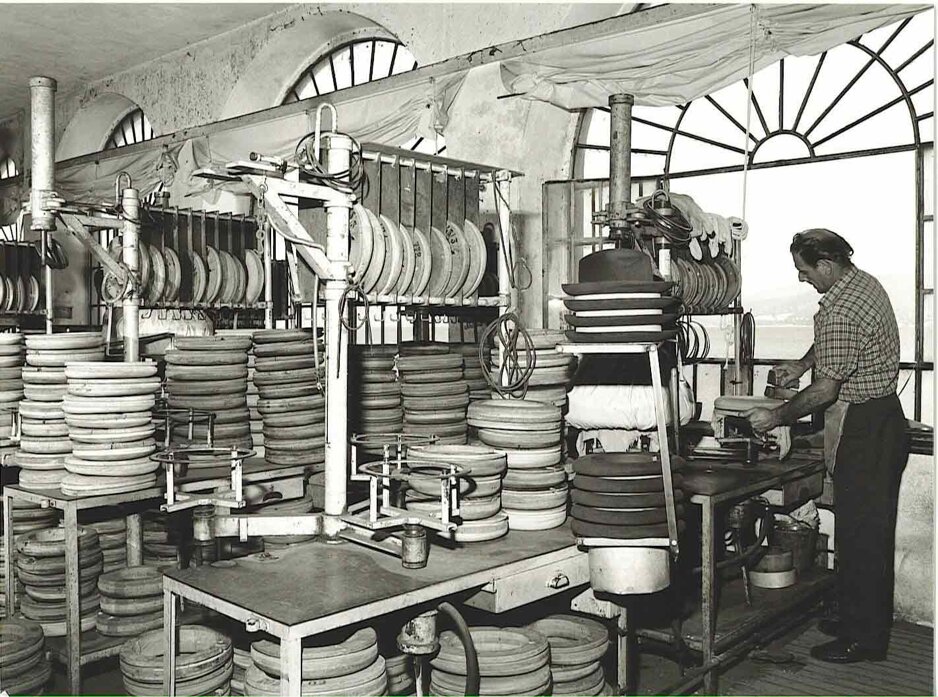
Ghiffa
Information and places of interest
The name Ghiffa covers a vast municipal territory composed of numerous small hamlets, distributed between Lake Maggiore and the hilly area that goes up from Verbania towards Switzerland.
HISTORY
The first settlements date back to the Golasecca civilization and the Iron Age, as evidenced by the rock carvings and the finds discovered in the area of the Sacro Monte di Ghiffa.
In the 17th century, Cardinal Giacomo Antonio Moriggia made Ghiffa a meeting place for artists and men of letters who gave rise to a lakeside renaissance.
In the 19th century, lake transport developed and the coastal road that goes up towards Switzerland was completed. Ghiffa thus became a center of attraction both for tourism, with the construction of hotels and large and prestigious villas, and for industry, in particular that of hats. The Panizza company established itself, inaugurating the homonymous hat factory located on the shore of the lake in 1879.
PLACES OF INTEREST
- SACRED MOUNTAIN: located along the wooded slopes of Mount Cargiago, in a splendid panoramic position, in 2003 the monumental complex was included by UNESCO in the World Heritage List together with six other Piedmontese Sacred Mountains.
Between the end of the 16th and the middle of the 17th century, a building plan was conceived for the expansion of the ancient oratory dedicated to the Holy Trinity and the construction, around it, of a Sacred Mountain on the thickly wooded hill. Other construction interventions took place between the middle of the 17th and the following century.
In its current state, the Sacred Mountain includes, in addition to the sanctuary, three chapels dedicated to different biblical subjects and the elegant portico of the Via Crucis.
From the Sacro Monte area (350 m) extends to the top of Mount Cargiago (713 m), a vast SACRED MOUNT OF GHIFFA NATURE RESERVE, crossed by numerous paths flanked by dry stone walls and characteristic votive chapels.
The forest in this area is characterized by the predominance of chestnut and other broad-leaved trees, especially oaks, limes, maples, ash trees, alders and birches and shrub species such as holly, butcher's broom, hazelnut and medlar.
The woodland environment represents an essential ecosystem in which the stable presence of roe deer, badgers, foxes, squirrels, martens, beech martens, while wild boar and deer are occasional. Among the birdlife, the black woodpecker stands out, a rather rare species and generally relegated to the quiet high-altitude woods.
At a morphological level, two important environmental units can be identified, which can be summarized in the steep eastern slope (towards Lake Maggiore) and the western slope (Ballona river basin), characterized by a gentler slope and rich in small streams.
- MONASTERY OF THE BENEDICTINE NUNS OF THE HOLY SACRAMENT: dates back to the early twentieth century and is located on the ruins of an ancient patrician building. A community of about 50 nuns who follow the Benedictine Rule has lived here since 1906.
- CASTLE OF FRINO: it was built around 1600 by the Moriggia marquises and then sold in 1896 to the architect Giuseppe Pirovano who restored it to its ancient splendor. In recent years it has been transformed into a hotel-restaurant.
- MUSEUM OF HAT ART: it is located in some rooms of the original nucleus of buildings that made up the old and glorious Panizza hat factory. This eclectic museum space was created to tell the story of a craft that became art and of a territory that became Italian excellence.
In 1994, the dream of the former hatters to transform the factory into a museum finally came true thanks to the donation of its last owner, Antonio Gamba.
The main attraction of the museum is made up of some old machinery and equipment that were active in the hat factory, photographic archives, very rare videos, collections and prints, made available to show how human ingenuity came to create headdresses destined to make history from rabbit fur.
In addition to the area dedicated to production, the museum is made up of other sections of cultural interest, including a collection dedicated to ethnic hats, inaugurated in 2007, and a collection of dolls, from the oldest to the Fashion Dolls of the 20th century, often characterized by elegant hats.








.jpeg)


